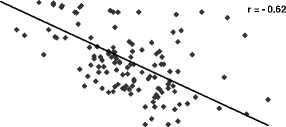Solar uv radiation and ozone dynamics over Bulgaria
Автор: Gogosheva Ts., Mendeva B., Petkov B., Krastev D.
Журнал: Солнечно-земная физика @solnechno-zemnaya-fizika
Статья в выпуске: 12 т.2, 2008 года.
Бесплатный доступ
This paper presents an investigation of the solar UV radiation dynamics and the total ozone content (TOC) behaviour over Bulgaria in the time period 1996-2005. The data are received from measurements, using the spectrophotometer Photon, placed in Stara Zagora. We also use ozone data from satellite experiments TOMS. The data analysis shows: • ·there isn't a statistically significant TOC trend over Bulgaria in the last 10 years; • the largest TOC variations are in the winter-spring and the lowest - in the summer; • ·a strong dependence between UV-B solar radiation reaching the Earth surface and TOC is received (r = -0.62 ±0.18) at 98 % confidence level.
Короткий адрес: https://sciup.org/142103274
IDR: 142103274 | УДК: 523.9,
Текст научной статьи Solar uv radiation and ozone dynamics over Bulgaria
1Ts. Gogosheva, 2B. Mendeva, 3B. Petkov, 4D. Krastev
В данной работе представленео исследование динамики солнечного УФ - излучения и поведения общего содержания озона (OCO) над Болгарией в период с 1996 по 2005 г . Данные измерений получены на спектрофотометре Photon, распо ложенном в Стара Загора . Мы также применяем данные по озону со спутниковых экспериментов TOMS. Анализ данных показывает , что :
-
– за последние 10 лет над Болгарией не выявлено статистически значимой тенденции поведения OC О ;
-
– наибольшие вариации OC О происходят зимой и весной , а наменьшие – летом ;
-
– уровень достоверности сильной зависимости между солнечным УФ - В - излучением , достигающим поверхности Земли , и OC О (r =–0.62 ± 0.18) составляет 98 %.
This paper presents an investigation of the solar UV radiation dynamics and the total ozone content (TOC) behaviour over Bulgaria in the time period 1996–2005. The data are received from measurements, using the spectrophotometer Photon, placed in Stara Zagora. We also use ozone data from satellite experiments TOMS. The data analysis shows:
-
– there isn’t a statistically significant TOC trend over Bulgaria in the last 10 years;
-
– the largest TOC variations are in the winter-spring and the lowest – in the summer;
-
– a strong dependence between UV-B solar radiation reaching the Earth surface and TOC is received (r = –0.62 ± 0.18) at 98 % confidence level.
Data analysis and results
The dynamics of the total ozone content over Stara Zagora is investigated using data from TOC measurements by the ground-based spectrophotometer Photon (1999–2005) as well as by the satellite instrument TOMS-EP (1996–2005).
The variability of the TOC monthly mean values, measured by TOMS-Nimbus-7 (1979–1992) demonstrates a negative trend (–6.9 %) in the TOC course [1]. Using data from TOMS-EP we receive that for 1996–2005 there isn’t a statistically significant TOC trend over Bulgaria (Fig. 1). Similar results for this time interval are obtained by Varotsos for latitudes of 62.5° S [2] and by Semenov for 42.6° N [3].
Using the TOMS data for 1996 – 2005, we track the TOC variations for the separate months of these years. The largest ozone fluctuations are in the winter-spring months of all years, and the lowest – in the summer months (Fig. 2). This might be due to the enhanced dynamics of the Earth’s atmosphere in the spring.
The intensity of UV-B solar radiation reaching the Earth surface strongly depends on the total ozone. Fig. 3 shows instantaneous values of solar UV irradiance at 305 nm measured at 30° SZA together with the total ozone. Reduction in the ozone leads to an increase of these wavelengths. The inverse relationship of these two variables is significant (r = –0.62 ± 0.18) at 98 % confidence level.
TOMS
330500 лМдДлМЛ
96 97 98 99 00 01 02 03 04 05
Years, 1996 - 2005
Fig. 1. TOC course from TOMS-EP data.
о 370
О 350 о 330
TOC 1997-2005 TOMS-EP

2501996 1997 1998 1999 2000 2001 2002 2003 2004 2005 2006
Years
Fig. 2. TOC monthly average values for February( ○ ) and July ( ■ ) using TOMS-EP data, 1997–2005.
SZA=30o 1998-2003

250 300 350 400 450
Total ozone, DU
Fig. 3. Dependence of the 305 nm wavelength irradiance on the TOC using Photon data.
Динамика солнечного ультрафиолетового излучения и озона над Болгарией


